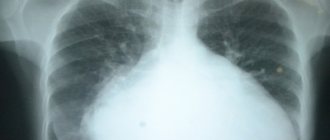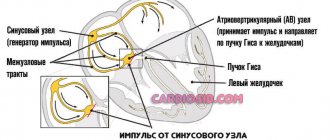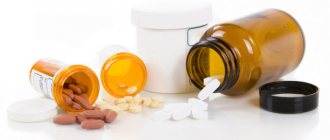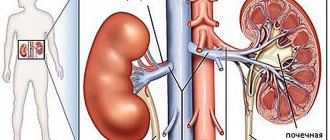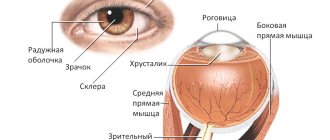Varicose veins of the penis are most often associated with a hereditary predisposition. This disease involves an enlargement of the veins on the penis by more than 6 mm. The disease is very unpleasant and can result in impotence, therefore, if you notice signs of varicose veins, you need to urgently make an appointment with a urologist.
Signs of varicose veins of the penis
The content of the article
The first signs of varicose veins on the penis are practically invisible. With the development of pathology, unpleasant sensations in the penis will be felt during sexual intercourse and urination:
- Due to the constant pressure of blood in the veins on the organ, the man experiences frequent urination, accompanied by unpleasant pain.
- Painful, pinching, tingling sensations in the penis during and without an erection.
- With varicose veins, pain can also occur during sexual intercourse, and especially during ejaculation.
- Swellings and veins twisting into knots and enlarged in size appear on the penis; abnormal swelling and associated redness can be noted. The formations can be easily felt when touching the penis.
If the disease is not treated, the veins increase in volume so much that huge lumps may appear on the penis itself, the number and size of which increases, causing pain to the patient. Vein anomalies become especially noticeable during an erection.
Complications
If swelling on the penis does not cause inconvenience and does not cause pain, it may be just a temporary deformation of the muscles and tendons of the penis, characteristic of male physiology, and not varicose veins.
But in any case, you need to see a urologist, since an advanced state of penile varicose veins can result in rupture of the veins during the next erection and internal or external hemorrhage. Such an ending, in the worst case, will lead to the complete loss of the functionality of the penis and complete impotence, and in the “best” - to infertility.
Symptoms
With traumatic rupture of blood vessels, the appearance of bruises is usually preceded by sharp pain, which is subsequently felt when pressure is applied. At first there will be a red spot. After a few hours it will turn blue, after 6-8 days it will turn yellow as a result of the destruction of red blood cells and hemoglobin, then disappear. But sometimes hemorrhages occur without pain, as is the case with the site https://www.consmed.ru/urolog/view/593750/:
Vascular rupture due to spontaneous hemorrhage - https://prntscr.com/10hul4c.
In case of non-traumatic hemorrhage in a limited area of the penis, a sensation of pain and itching may appear, which goes away after 1-2 days.
- Bruise on the penis after oral sex – https://prntscr.com/10hulrl.
- Hematoma on the penis - https://prntscr.com/10hum7e.
- The capillaries on the penis burst in the field of sex - https://prntscr.com/10humuf.
When using a cock ring for more than 25 minutes, not only the blood vessels on the penis burst, but also the nerve endings are damaged. The pain from the bruise may radiate to the head of the penis, and for the first 2-3 days it will feel numb.
Bursted blood vessels on the head of the penis and foreskin after exercising with a pump - https://prntscr.com/10hunr2.
Bruise on the penis after intense masturbation – https://prntscr.com/10huobk from the forum https://uro-forum.ru/viewtopic.php?t=5987.
Doctor's comment
The main reasons for the development of varicose veins
Varicose veins on the penis do not appear on their own. Knowing the reasons, you can protect yourself from unpleasant consequences. Usually the reason for the development of varicose veins in the veins of the penis are:
- Injuries during physical or sports training, blows delivered directly to the groin area.
- Improper functioning of the genitourinary system due to bladder diseases.
- Unsuccessful penile surgery associated with other diseases.
- Sexual life leading to constant changes of partners and infection with infectious diseases that cause swelling and inflammation in the genital area.
- The use of drugs that cause instant erection of the penis, arousal and abuse of alcohol and tobacco.
- Prolonged, exhausting sexual intercourse.
Causes
The capillaries on the penis burst due to external physical influence or under the influence of internal factors. The latter include blood pressure, pathologies of the blood and vascular walls, and systemic diseases.
Injuries
The main cause of bruises on the penis are injuries: during sex, masturbation, playing sports or performing exercises to enlarge the penis.
In sex, the most dangerous position is when the woman is on top. The penis may enter incorrectly and rest against the edge of the vagina. A sharp bend of the cavernous bodies sometimes leads to a fracture of the penis - an internal rupture of its membranes. In such cases, an extensive hematoma forms and the organ becomes deformed. A vessel on the penis can also burst while putting on a condom, especially in a state of incomplete erection.
Do you think everything is so simple?
A step-by-step guide on how to put on a condom correctly.
Urologist-andrologist Nikita Petrovich Naumov explains why a penis fracture can occur, what exactly breaks and what emergency help is required
Some men use cock rings during sex. If the ring is too tight or sexual intercourse lasts more than 20-30 minutes, the vessels cannot withstand the pressure and may burst.
Bleeding on the penis is a common occurrence for men who practice pumping. This is a technique for improving erection and enlarging the penis. Negative pressure can cause ruptures of blood and lymphatic vessels.
Pathologies of blood vessels and blood
In some men, bruises on the genitals appear in a state of complete rest - due to weak vascular walls. Small pinpoint hemorrhages periodically occur throughout the body. This is especially noticeable when blood pressure rises during exercise in the gym.
Reasons for weakening of vascular walls:
- Deficiency of vitamin C, which is involved in the formation of collagen fibers.
- Diabetes. Elevated blood sugar levels make the walls of blood vessels brittle and inelastic.
- Congenital pathology of connective tissue synthesis.
Bruises on the penis appear due to increased blood flow - hemophilia. In the body, microtrauma of blood vessels inevitably periodically occurs with the release of blood into the intercellular space. But normally, it quickly collapses without forming a hematoma. In hemophilia, such microtraumas become bruises. A blood clot does not form for a long time, the leaking blood increases the pressure and provokes damage to surrounding tissues.
Other pathologies
Pathologies that contribute to the appearance of bruises:
- Varicose veins.
- Stagnation (congestion) in the pelvic area.
- Benign and malignant formations of the pelvis, compressing veins and arteries.
- Increased blood pressure due to prolonged urinary retention.
All of the above conditions impair blood circulation, which creates increased stress on the vascular walls.
Diagnosis of the disease
First of all, to confirm the diagnosis, the urologist will do an ultrasound of the penis with a Doppler sensor - Doppler sonography. This will help accurately determine the stage of the disease and the presence or absence of blood clots in the swollen veins of the penis. Doppler measurements are carried out during an artificially induced erection, during which the condition of the vascular wall and the level of blood stagnation in the veins are thoroughly examined.
Additionally, the doctor will examine in detail the prostate and the entire scrotum using ultrasound - this is done with a conventional sensor. The examination is not painful or dangerous.
If varicose veins of the genital organ have gone far, you need to examine the entire pelvis. It is possible that the cause of the pathology lies in other organs.
Degrees of varicocele
Varicocele grades (according to the criteria of the European Association of Urology):
| STAGE | CHARACTERISTIC |
| Subclinical varicocele (0) | non-palpable (even with the Valsalva maneuver) dilation of veins, determined only using Doppler ultrasound |
| First stage varicocele | expansion palpable during the Valsalva maneuver, disappearing with rest |
| Second stage varicocele | expansion palpable at rest and during the Valsalva maneuver, but not visually detectable |
| Third stage varicocele | visually detectable dilatation, determined both at rest and during the Valsalva maneuver |
The second and third stages may be accompanied by a decrease in size (hypotrophy) of the corresponding testicle.
Treatment of varicose veins
If you seek help from a urologist before penile varicose veins reach a severe stage, you can avoid surgery and undergo vein treatment on an outpatient basis. The patient is prescribed medications based on herbal infusions in the form of ointments and gels, ointments that improve blood circulation and strengthen the walls of blood vessels. They have a warming effect and disperse blood stagnation in the veins, significantly expanding and then constricting the vessels. If varicose veins of the penis are advanced, immediate surgical intervention under local or general anesthesia will be required. Most often, gentle techniques are used - such procedures are carried out directly in the clinic.
Surgical treatment is carried out using different methods:
- Percutaneous embolization . To control manipulations, X-ray technology is used that supplies normalized radiation. The impact leads to occlusion (narrowing) of the varicose vein without using a scalpel. Disadvantage of embolization - possible side effects caused by X-ray radiation.
- Classic surgical operation . The urologist makes a skin incision over the testicular vein. The dilated vessel is pulled in two places, blocking the blood flow. After this, the affected part of the vein is cut off. The outflow of blood after surgery occurs through healthy vessels.
- Microsurgical ligation . If the veins of the spermatic cord are clearly visible, a low-traumatic intervention is performed. The affected vein is operated on through a mini-access. Naturally, recovery after the procedure is faster than after conventional surgery.
- Laparoscopic surgery . To access the veins, a laparoscope is used - a device with a mini-camera and lighting. The operation is monitored through a computer monitor, so damage to the lymph nodes and testicular artery is excluded.
The urologist decides which method to treat genital varicose veins. The doctor first of all takes into account the degree of development of the pathology and the extent of the process.
What to do if a blood vessel on the penis ruptures
First aid. If the bruise is fresh, noticed immediately after the hemorrhage, then cold can be applied. Ice or freezing must be wrapped in several layers of cloth or a thick towel, otherwise the skin of the penis can be damaged. The cold causes the blood vessels to constrict, causing a blood clot to form faster.
If a vein on the penis or a large vessel bursts, you need to press it with your fingers and call an ambulance.
Drugs
Non-steroidal anti-inflammatory ointments will help relieve severe pain and inflammatory swelling: Diclofenac Gel, Dolgit, Nurofen Express, Indovazin. They should be applied for acute hematoma in the first 2 days twice a day.
Diclofenac gel has analgesic and anti-inflammatory effects. Price from 110 rubles
Ointments for the treatment of hemorrhages on the penis:
- "Badyaga." Irritates the skin, increases blood circulation, and prevents the formation of bruises.
- Ichthyol. Has an analgesic, anti-inflammatory, antiseptic effect. Stimulates blood circulation, restores tissue trophism.
- Heparin. Thins the blood, strengthens capillaries.
- "Troxevasin". It has an anti-inflammatory and anti-edematous effect, resolves hematomas.
- Gel “Bruise-off” with leech extract. Eliminates bruising and swelling.
Ointments should be applied to the hematoma 2-3 times a day.
Important: blood-thinning drugs cannot be used if blood clotting is poor - the hematoma will increase.
To strengthen the vascular walls, Ascorutin, Detralex, Angiovit Magnesium, and vitamin C are prescribed.
The price of ascorutin in pharmacies is from 60 rubles
Folk remedies
Honey and propolis can be used to treat hematomas. These bee products have pronounced anti-inflammatory and anti-edematous properties. Applications with honey are applied to the penis at night for 2-3 days.
Propolis ointment relieves inflammation and eliminates bruising. Homemade recipe:
- Heat 100 ml of vegetable oil to 80˚C.
- Add 5 g beeswax and 10 g propolis.
- Stirring, heat for another 25 minutes. Do not let it boil.
- Pour into a glass container, cool, and store in the refrigerator.
To speed up the healing of bruises, apply as applications at night or lubricate the penis twice a day.
Recipe for making propolis ointment from beeswax with propolis at home
Other methods:
- Compresses made from crushed grape leaves, aloe pulp, Kalanchoe, and hammered cabbage leaves. Change the bandage as it dries.
- Banana peel dressings. It should be applied to the bruise with the inner side.
- Lotions with a decoction of medicinal herbs: pour a glass of boiling water over a tablespoon of chamomile, coltsfoot, and celandine, hold in a water bath, then leave for an hour and a half. Soak several layers of gauze in the broth, apply to the bruise, and cover with a waterproof bandage for 30-40 minutes. Carry out the procedure in the morning and evening.
A simple recipe for hematomas: grate an onion, mix with a teaspoon of salt, apply to the bruise, cover with a bandage until it dries, then replace the compress.
If damage to the blood vessels on the penis is caused by venous congestion in the pelvis, then hirudotherapy is an effective treatment method. Leeches release hirudin into the blood. This substance thins the blood by inhibiting the clotting enzyme thrombin.
Prevention of genital diseases, including varicose veins
- Scheduled examination by a urologist
. Starting from adolescence, a man should be examined by a male doctor once a year. Having reached 45 years of age, visit a urologist every six months: at this age dangerous diseases appear - prostatitis, adenoma and prostate cancer. - Unscheduled consultation
. Make an appointment with your doctor if you notice any discharge from the genitals, rashes, itching, pain when urinating, increased frequency of urination, or changes in urine volume. These signs can indicate serious illnesses, many of which are quite easy to treat at the very beginning. - Diagnostics
. If you are sexually active, get tested regularly for sexually transmitted infections. You also need to take tests every six months if you have chronic diseases of the reproductive system, tumors, condylomas, or pathologies of the male organs. - Treatment
. Follow all doctor's recommendations. If the doctor recommends removal of the tumor or another radical treatment method, carry it out without delay! - Prevention
. When planning to conceive a child, contact a urologist and undergo all the necessary examinations. Remember that all sexually transmitted infections are a path to infertility or the birth of a sick baby. Do not forget that you need to treat STDs at the same time as your spouse.
Attention! At the first signs of decreased libido, impotence, or accelerated ejaculation, make an appointment and undergo examination and treatment by a urologist - this will save you from problems in your personal life.
